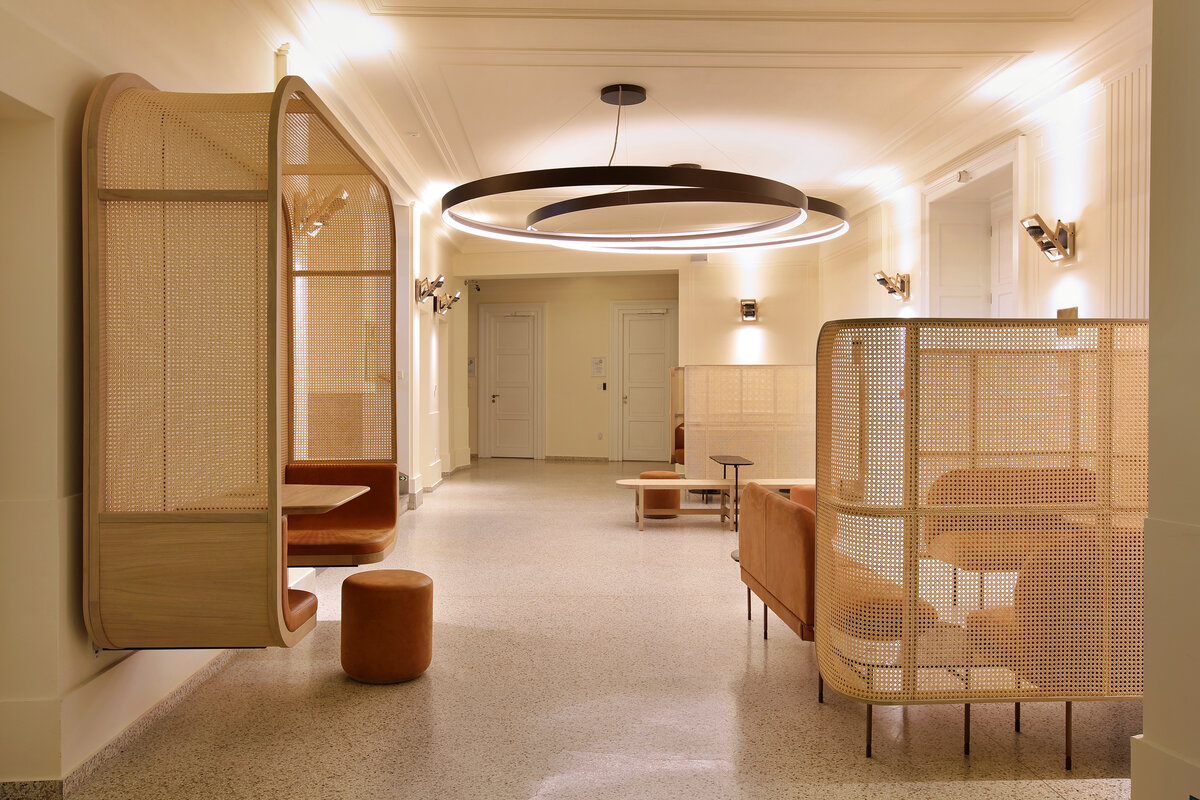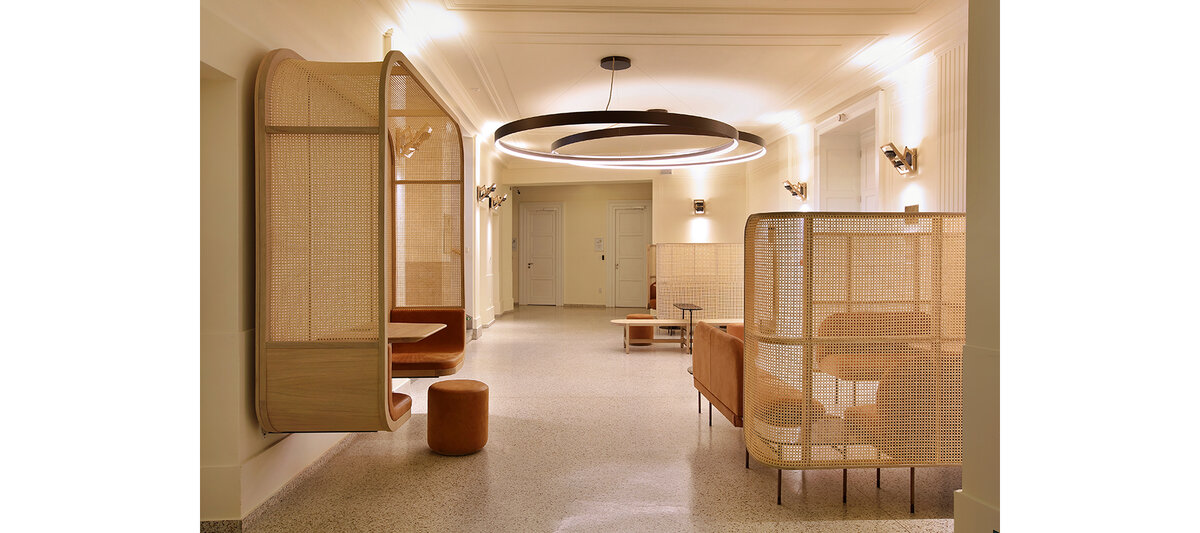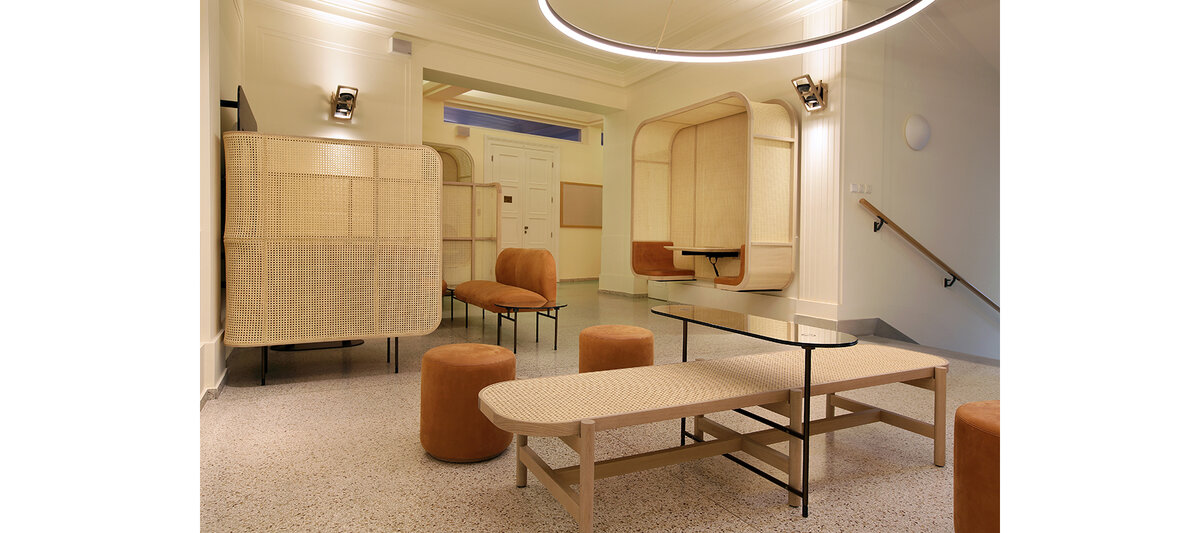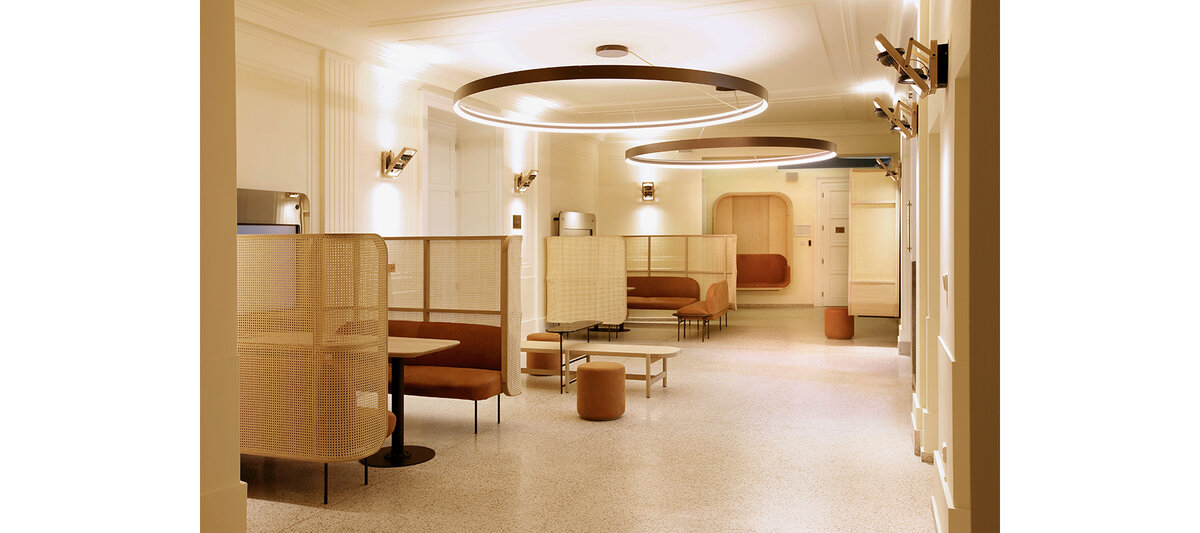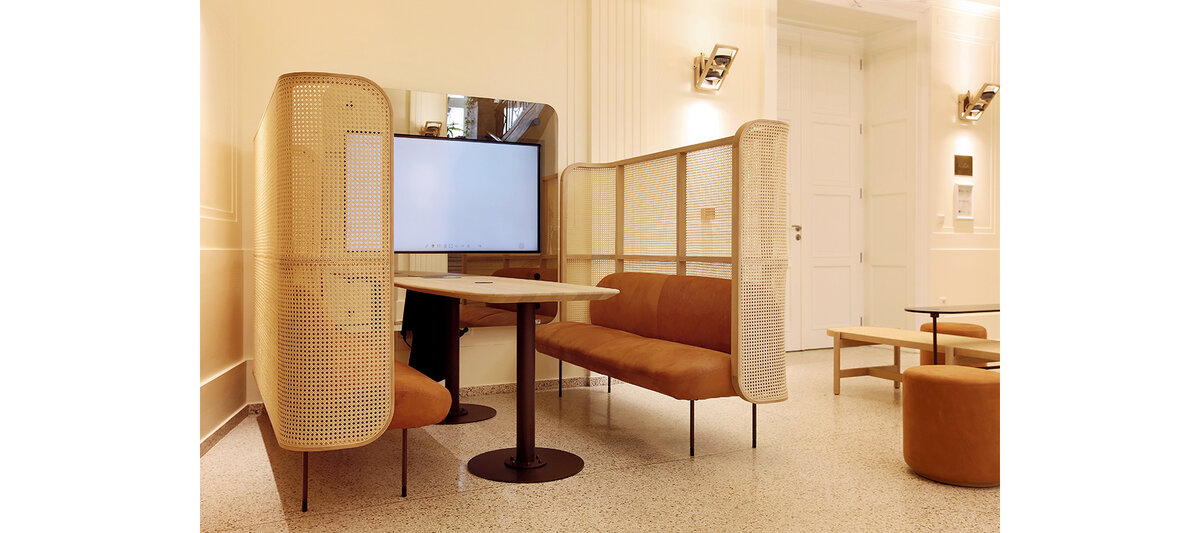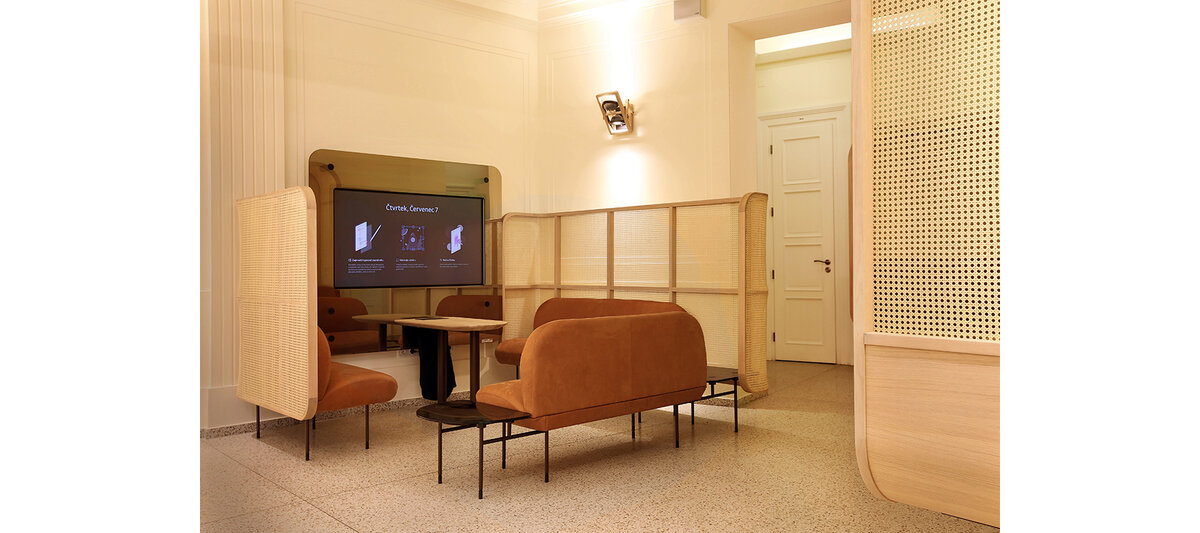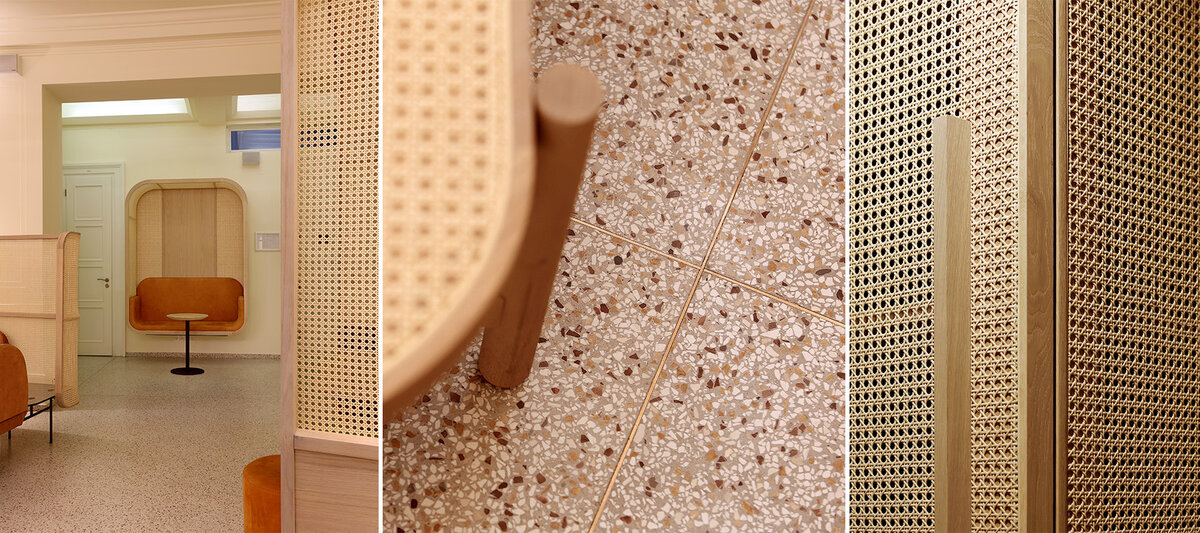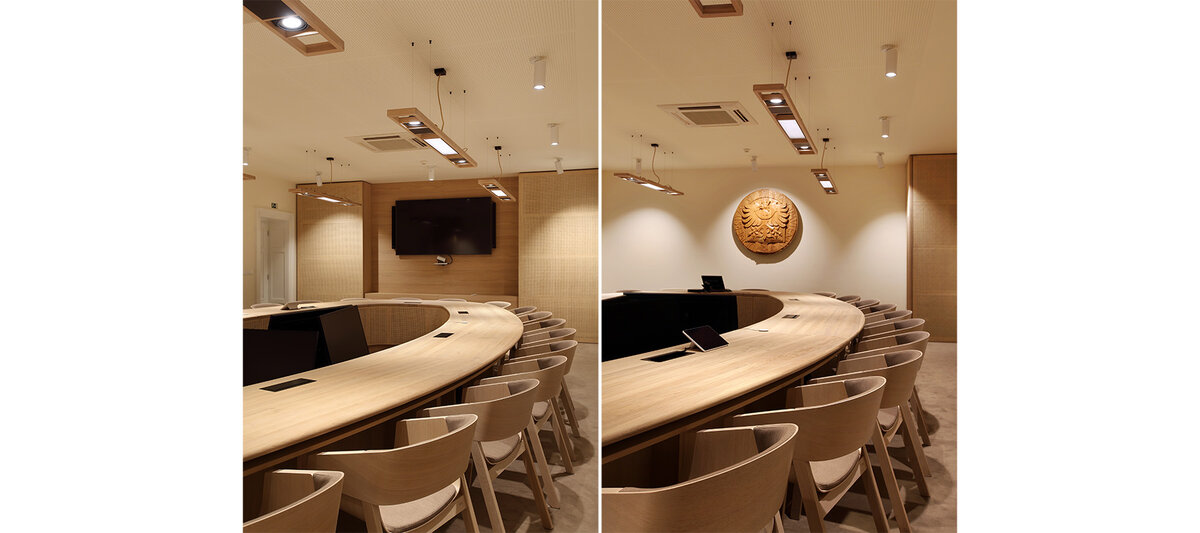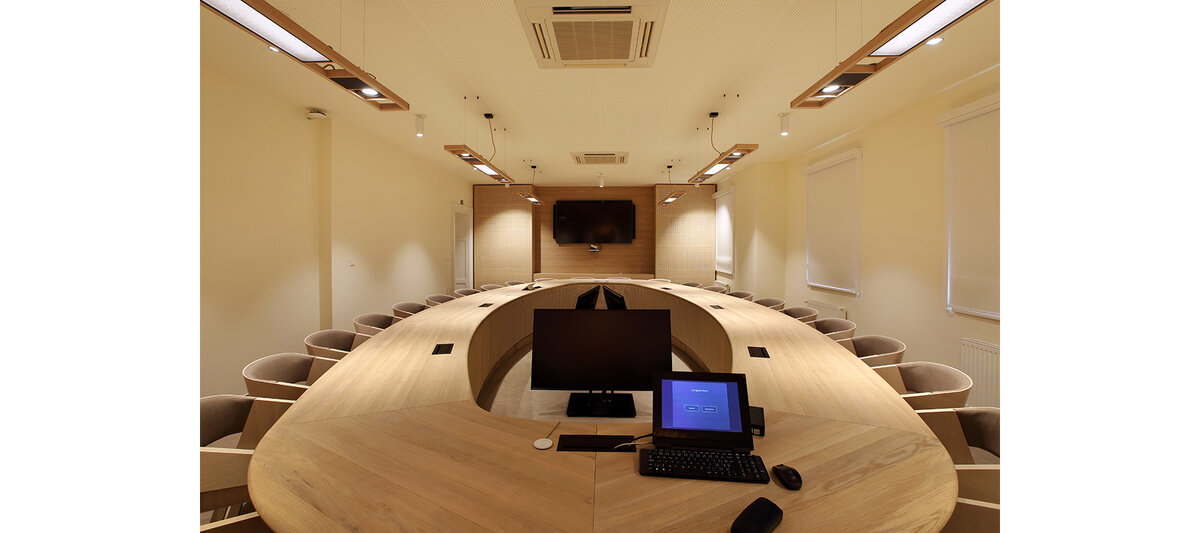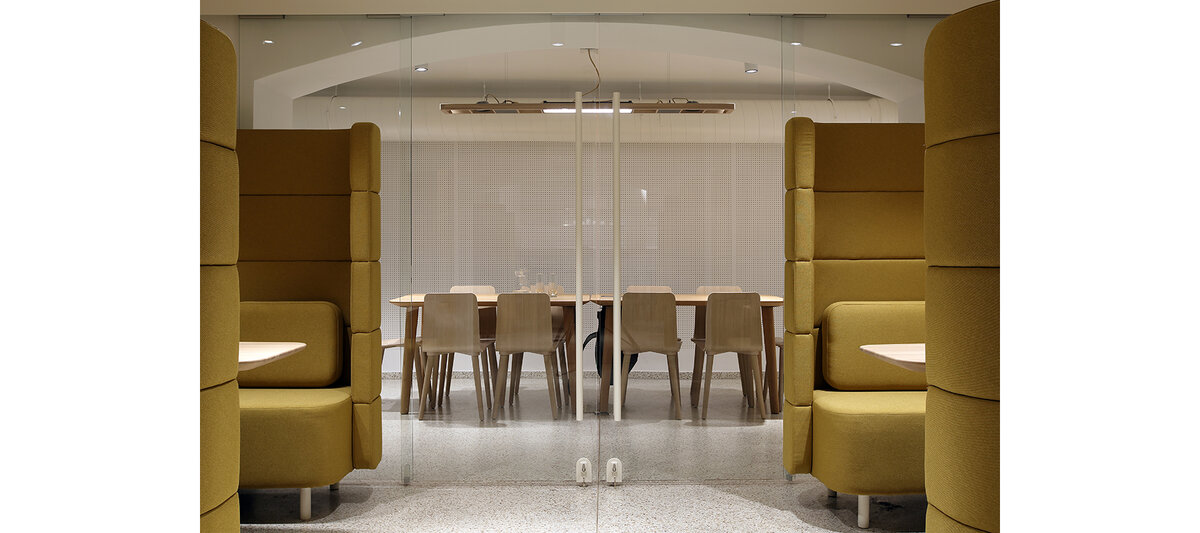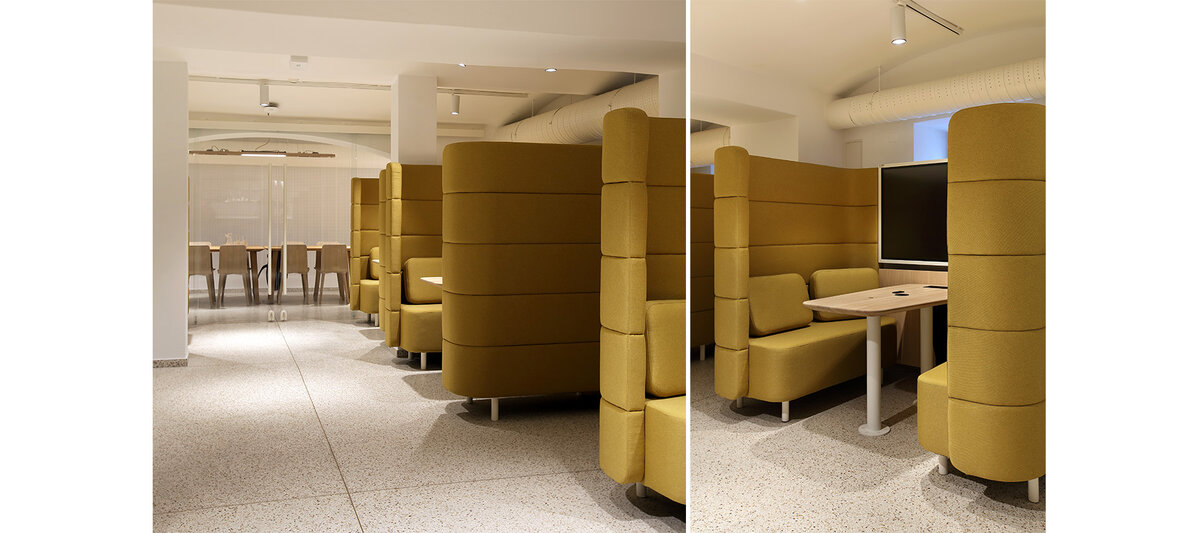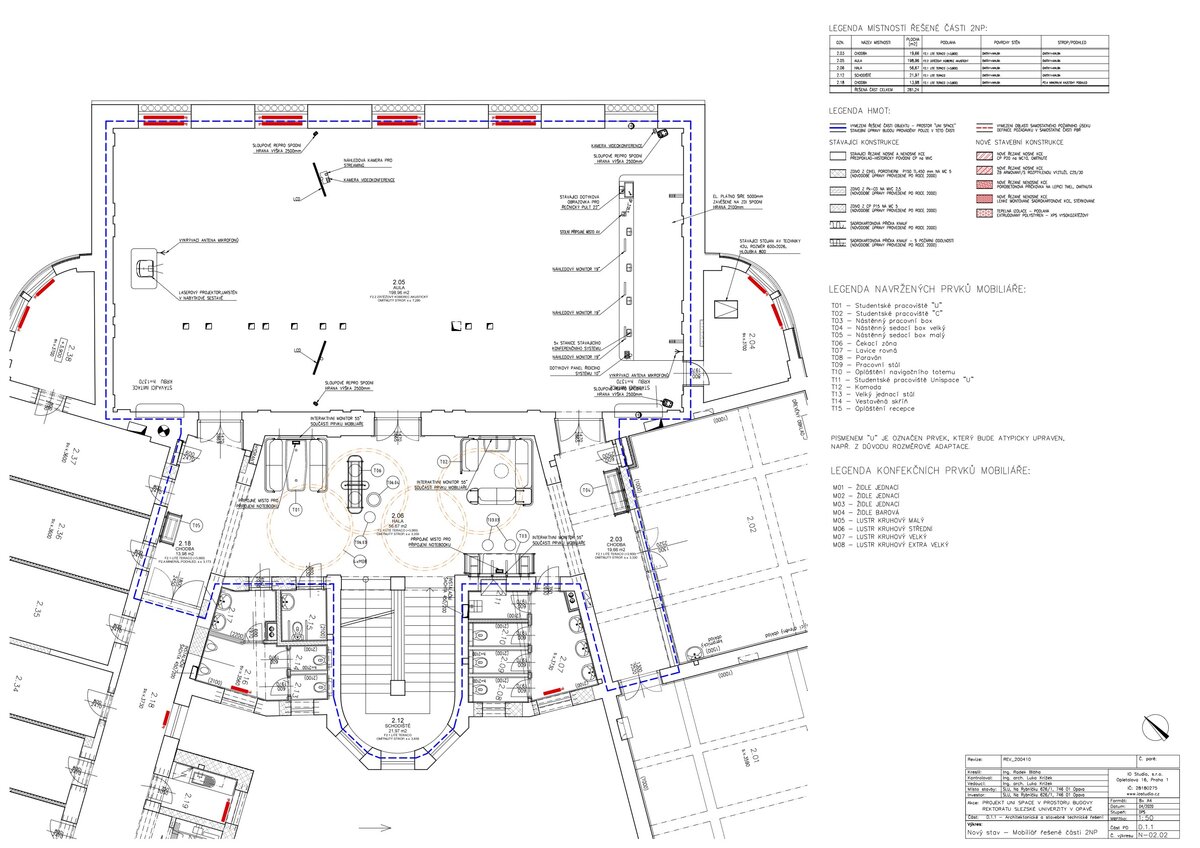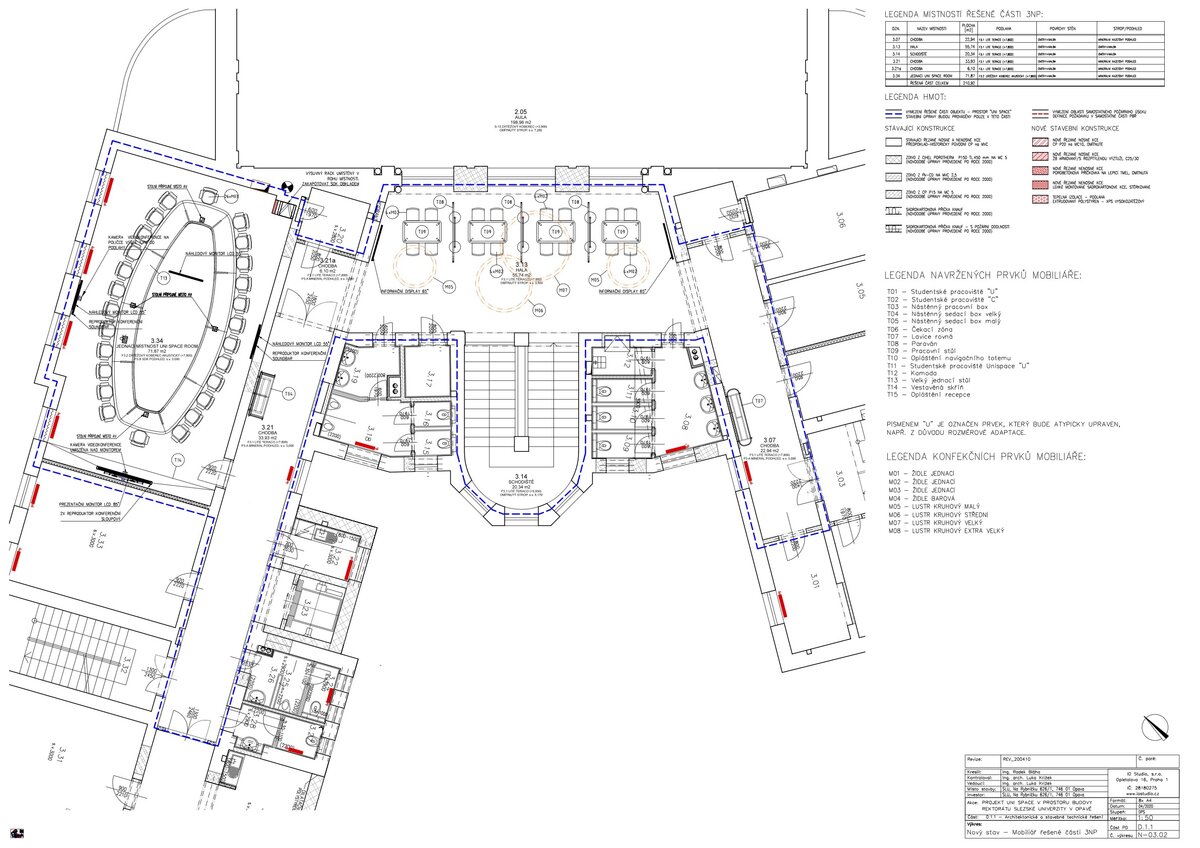| Author |
Ing.arch Luka Krizek, Ing. Radek Bláha, IO Studio |
| Studio |
|
| Location |
Olbrichova 625/25, Předměstí, 746 01 Opava |
| Investor |
Slezská univerzita v Opavě, Olbrichova 625/25, Předměstí, 746 01 Opava |
| Supplier |
AVT Group a.s., V Lomech 2376, 149 00 Praha 11-Chodov |
| Date of completion / approval of the project |
January 2021 |
| Fotograf |
|
The project addressed the problem of insufficient infrastructure facilities at the Silesian University in Opava (SU) that would support quality of education standard, enhance openness, strengthen international cooperation and increase interest in studying at the university.
The aim of the project was to create a high-quality facilities at the Silesian University by improving the quality of interior, audiovisual and other equipment. The project supports the development of international cooperation and strengthens the attractiveness of studying at Silesian University. Thanks to the project, the perception of SU significantly increased as a modern and progressive family-type university providing internationally competitive education.
The scope of our project was the design and production of atypical furnishing elements and their incorporation into the existing premises of the Rector's Office without the need for major construction interventions in the building.
The building of the Rectorate is located in the centre of Opava, on the corner of Na rybníčku and Olbrichovi streets, with the main facade facing the Republic Square.
The building has 5 floors above ground, including the original attic (5NP), and 1 underground floor. The interior modifications included selected communal parts of the building, corridor and entrance foyer areas (1NP-3NP), as well as a large enclosed training room on 3NP and a universal classroom on 1PP. The project also included technological upgrades to the representative auditorium.
The opulent classical building was originally built as a military headquarters with a ballroom hall in the first quarter of the last century and has been used by the university since 2003.
The material and form of the interior design sensitively relates to the representative character of the historic building and supports its neoclassical appearance. To the rich stucco interior decoration of the walls and ceilings, we inserted a lightweight type of furnishings made of a fine ash wood structure with rattan. Due to the dimensionally smaller spaces, this type of furnishing creates sufficient privacy for all users in busy communication nodes and yet does not overfill the space with its presence. It seemed appropriate to us to use this historical technology of furniture production as a fusion of two worlds, the world of modern technology with the heritage environment of the building. As part of the refurbishment, we replaced the modern ceramic tiles of 40x40cm format with a more historical looking surface made of cast terrazzo. The surfaces of the walls and ceilings were matched in colour with the pinkish hue of the cast terrazzo and the bleached tonality of the atypically designed wooden furnishings. The new lighting of all spaces was also an important point.
Green building
Environmental certification
| Type and level of certificate |
-
|
Water management
| Is rainwater used for irrigation? |
|
| Is rainwater used for other purposes, e.g. toilet flushing ? |
|
| Does the building have a green roof / facade ? |
|
| Is reclaimed waste water used, e.g. from showers and sinks ? |
|
The quality of the indoor environment
| Is clean air supply automated ? |
|
| Is comfortable temperature during summer and winter automated? |
|
| Is natural lighting guaranteed in all living areas? |
|
| Is artificial lighting automated? |
|
| Is acoustic comfort, specifically reverberation time, guaranteed? |
|
| Does the layout solution include zoning and ergonomics elements? |
|
Principles of circular economics
| Does the project use recycled materials? |
|
| Does the project use recyclable materials? |
|
| Are materials with a documented Environmental Product Declaration (EPD) promoted in the project? |
|
| Are other sustainability certifications used for materials and elements? |
|
Energy efficiency
| Energy performance class of the building according to the Energy Performance Certificate of the building |
|
| Is efficient energy management (measurement and regular analysis of consumption data) considered? |
|
| Are renewable sources of energy used, e.g. solar system, photovoltaics? |
|
Interconnection with surroundings
| Does the project enable the easy use of public transport? |
|
| Does the project support the use of alternative modes of transport, e.g cycling, walking etc. ? |
|
| Is there access to recreational natural areas, e.g. parks, in the immediate vicinity of the building? |
|
